Introduction
Eight Treasure Spinach, or Ba Bao Bo Cai in Mandarin, is a vibrant and nutrient-packed dish that embodies the essence of Chinese home cooking. This recipe combines tender spinach leaves with a medley of eight complementary ingredients—each adding a unique texture, flavor, and nutritional benefit. Rooted in traditional Chinese cuisine, this dish is celebrated for its balance of colors, tastes, and health-promoting properties. Whether you’re a seasoned home cook or a novice in the kitchen, this guide will walk you through creating a restaurant-quality Eight Treasure Spinach dish that impresses with its simplicity and elegance.
The Origins and Symbolism
The name “Eight Treasure” reflects the cultural significance of the number eight in Chinese culture, symbolizing prosperity, good fortune, and completeness. Each ingredient in this dish is chosen not only for its culinary contribution but also for its symbolic value. For example, spinach represents vitality, while ingredients like mushrooms, bamboo shoots, and dried tofu symbolize longevity and harmony. Together, they create a dish that is as meaningful as it is delicious.
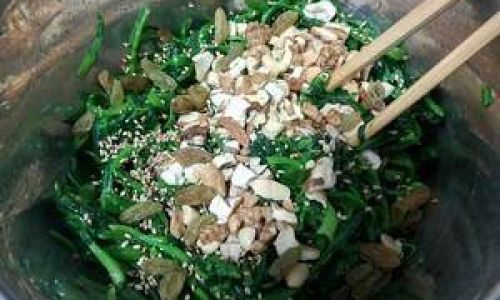
Ingredients: Assembling Your Treasures
To recreate this dish authentically, gather the following ingredients. Quantities are designed to serve four people as a side dish or light main course. Adjust portions as needed.
- Spinach (500g): Fresh, crisp leaves are essential. Avoid wilted or yellowing produce.
- Dried Shiitake Mushrooms (8–10 pieces): Rehydrated in warm water for 30 minutes until plump.
- Bamboo Shoots (100g): Canned or fresh, sliced into thin strips.
- Carrots (1 medium): Julienned for color and crunch.
- Dried Tofu Skin (50g): Soaked in water until soft, then cut into strips.
- Cooked Chicken or Shrimp (100g): Optional for non-vegetarian versions; shredded.
- Roasted Peanuts (50g): Unsalted, crushed coarsely.
- Black Fungus (20g): Rehydrated and sliced into bite-sized pieces.
- Garlic (3 cloves): Minced.
- Ginger (1-inch piece): Grated.
- Sesame Oil (1 tbsp): For aromatics.
- Light Soy Sauce (2 tbsp): Adjust to taste.
- Oyster Sauce (1 tbsp): Or vegetarian stir-fry sauce for a vegan alternative.
- Sugar (1 tsp): To balance flavors.
- White Pepper (¼ tsp): Freshly ground.
- Cornstarch (1 tbsp): Mixed with 2 tbsp water for thickening.
- Cooking Oil (2 tbsp): Peanut or vegetable oil.
- Salt (to taste): For blanching spinach.
Preparation: Step-by-Step Guide
Blanching the Spinach
- Fill a large pot with water and bring it to a rolling boil. Add a pinch of salt to preserve the spinach’s vibrant green color.
- Submerge the spinach leaves in the boiling water for 30–45 seconds. Overcooking will result in a soggy texture.
- Immediately transfer the blanched spinach to an ice bath to halt cooking. Drain thoroughly and gently squeeze out excess water.
- Arrange the spinach neatly on a serving platter, creating a bed for the other ingredients.
Preparing the Aromatic Base
- Heat 1 tbsp of cooking oil in a wok over medium heat. Add minced garlic and grated ginger, stirring until fragrant (30 seconds).
- Introduce the rehydrated shiitake mushrooms and bamboo shoots. Sauté for 2–3 minutes until tender.
- Toss in the julienned carrots and dried tofu skin. Stir-fry for another 2 minutes to meld flavors.
Adding Protein and Texture
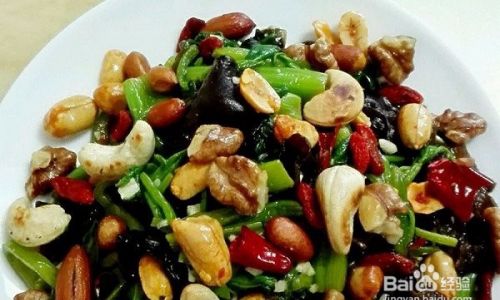
- If using chicken or shrimp, add it to the wok now. Stir-fry until heated through (1–2 minutes).
- Incorporate the black fungus and roasted peanuts, ensuring all ingredients are evenly distributed.
Crafting the Sauce
- In a small bowl, combine light soy sauce, oyster sauce, sugar, white pepper, and 2 tbsp of water. Mix well.
- Pour the sauce into the wok, stirring gently to coat the ingredients. Allow it to simmer for 1 minute.
- Thicken the mixture by adding the cornstarch slurry. Stir continuously until the sauce reaches a glossy consistency.
Assembling the Dish
- Spoon the cooked mixture over the bed of spinach, spreading it evenly to showcase the colorful ingredients.
- Drizzle sesame oil generously over the top for a finishing touch of aroma and shine.
Final Touches
- Garnish with additional crushed peanuts or a sprinkle of toasted sesame seeds for added crunch.
- Serve warm or at room temperature, paired with steamed rice or as part of a multi-course meal.
Tips for Perfecting Eight Treasure Spinach
- Spinach Selection: Opt for baby spinach for a milder flavor or mature leaves for a robust taste. Always rinse thoroughly to remove grit.
- Blanching Technique: Avoid overcrowding the pot during blanching to ensure even cooking. A spider strainer helps transfer leaves efficiently.
- Ingredient Flexibility: Customize the “eight treasures” based on dietary preferences. Substitute chicken with edamame for a vegan version or add water chestnuts for extra crunch.
- Sauce Consistency: Adjust the cornstarch ratio if you prefer a thicker or thinner sauce. Taste and tweak seasonings before serving.
- Presentation: Arrange the spinach and toppings artfully to highlight the dish’s visual appeal. A round platter mimics the traditional serving style.
Health Benefits and Nutritional Value
Eight Treasure Spinach is a powerhouse of nutrients. Spinach is rich in iron, vitamins A and C, and antioxidants, while mushrooms provide immune-boosting properties. Bamboo shoots add fiber, and peanuts contribute healthy fats and protein. This dish is low in calories yet satisfying, making it ideal for health-conscious eaters.
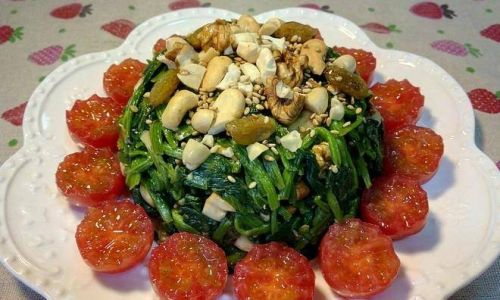
Cultural Variations Across Regions
While the classic recipe remains consistent, regional adaptations exist. In northern China, cooks might add wood ear mushrooms or replace peanuts with pine nuts. Southern variants sometimes incorporate fermented tofu or pickled vegetables for a tangy twist. No matter the region, the dish retains its reputation as a symbol of abundance and culinary craftsmanship.
Troubleshooting Common Issues
- Soggy Spinach: Ensure proper blanching and ice bath cooling. Overcooking or inadequate draining causes wateriness.
- Bland Flavor: Amplify seasonings gradually. Add a splash of rice vinegar for acidity or a pinch of chili flakes for heat.
- Mushy Texture: Avoid overstirring during cooking. Gentle folding preserves the integrity of delicate ingredients.
Leftovers and Storage
Store any remaining portions in an airtight container in the refrigerator for up to two days. Reheat gently in a microwave or wok, adding a splash of water to restore moisture. The flavors often deepen overnight, making leftovers a delightful treat.
Conclusion
Eight Treasure Spinach is more than a dish—it’s a celebration of culinary tradition and the joy of sharing a wholesome meal with loved ones. By mastering this recipe, you gain a versatile addition to your repertoire, suitable for everyday dinners or festive occasions. Experiment with ingredients, savor the harmony of flavors, and let this vibrant dish become a cherished part of your home cooking legacy. Whether you’re feeding a family or impressing guests, Eight Treasure Spinach promises to deliver beauty, nutrition, and a taste of Chinese heritage in every bite.
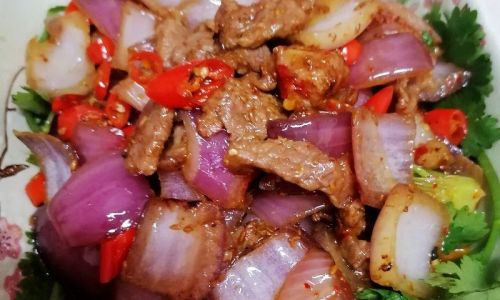
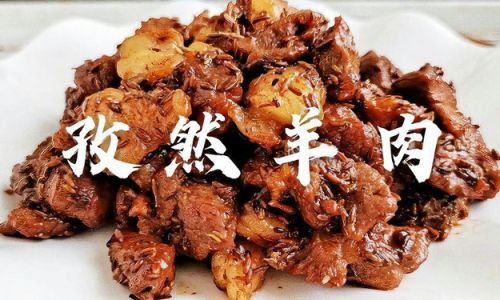
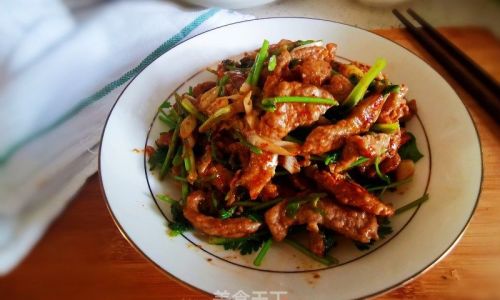
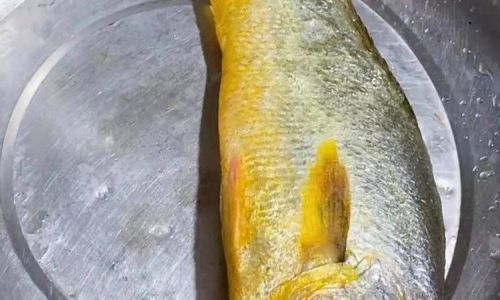

0 comments